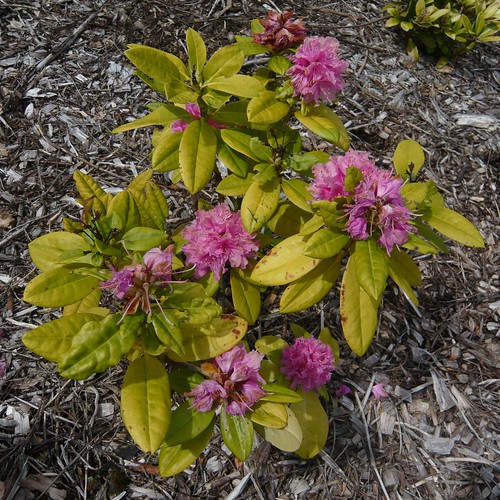Yellow and Sickly Leaves caused by Chlorosis
Yellow sickly leaves on acid loving plants is called ‘chlorosis’. It is a nutrition problem as the plant is inhibited from getting the nutrients from the soil. It is easiest to think of it as an Iron or acid deficiency.
Plants affected by Yellowing Leaves
- Rhododendrons often suffer if the soil is not sufficiently acidic as the picture shows. Eventually the leaves then the shrub dies.
- Chlorosis in fruit trees is a gradual yellowing of the tissue between the veins of younger leaves will occur while the veins themselves stay green.
- Azalea, Laurel, Maples, Oaks and other ericaceous plants can show symptoms of chlorosis.
- Tomato chlorosis crinivrus is a yellowing of leaves but is cause by a virus introduced by white fly. Control the insects and feed the plants.
- Yellowing leaves on houseplants can be due to overwatering. If your plant has been sitting in water it’s time to let it dry out.
Cures for Chlorosis
- Water with a liquid feed of ‘Sequestrene’ which is designed for such plants.
- Fertilizers that contain chelated iron, manganese and magnesium will help improve the colour and health of leaves and plants available from Thompson Morgan
- ‘Sequestrene’ Granular Iron Tonic is for acid-loving ericaceous plants. It provides iron in a chelated form which can easily be taken up in any soil.
- Foliar Sprays may be effective as a temporary measure, spray when the symptoms are first noticed with a ferrous sulphate solution.
- Peat, ericaceaous compost or applications of acid fertilizers, such as ammonium sulphate may help mild cases of iron chlorosis.
- Do not lime the soil.
- Treatment the soil directly with flowers of sulphur to lower the pH to 5.5
